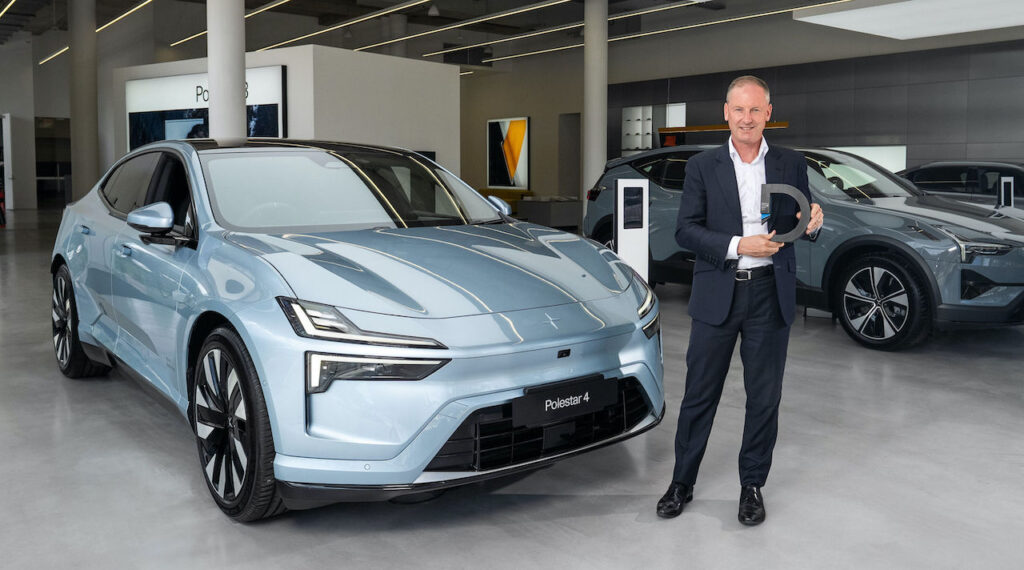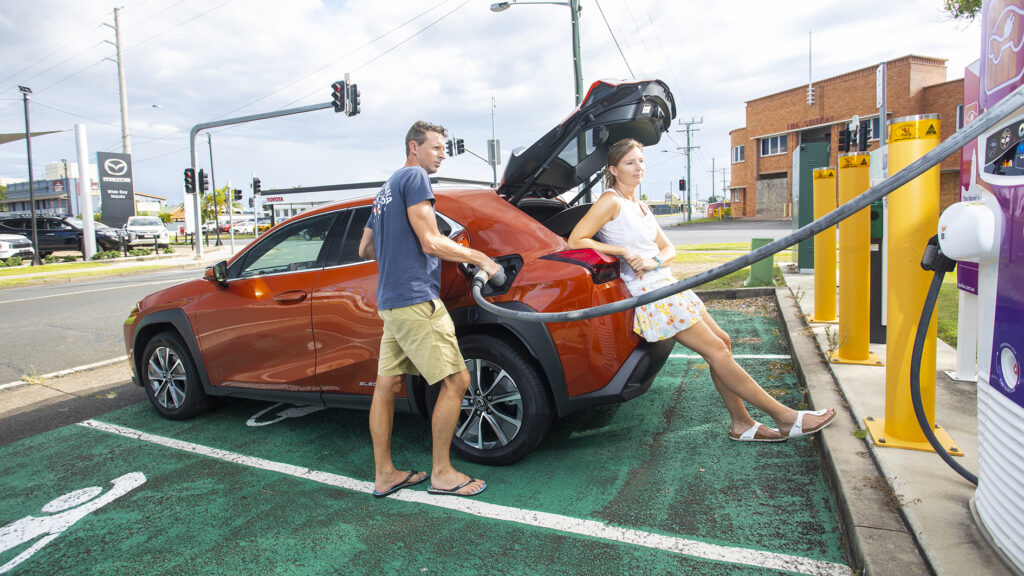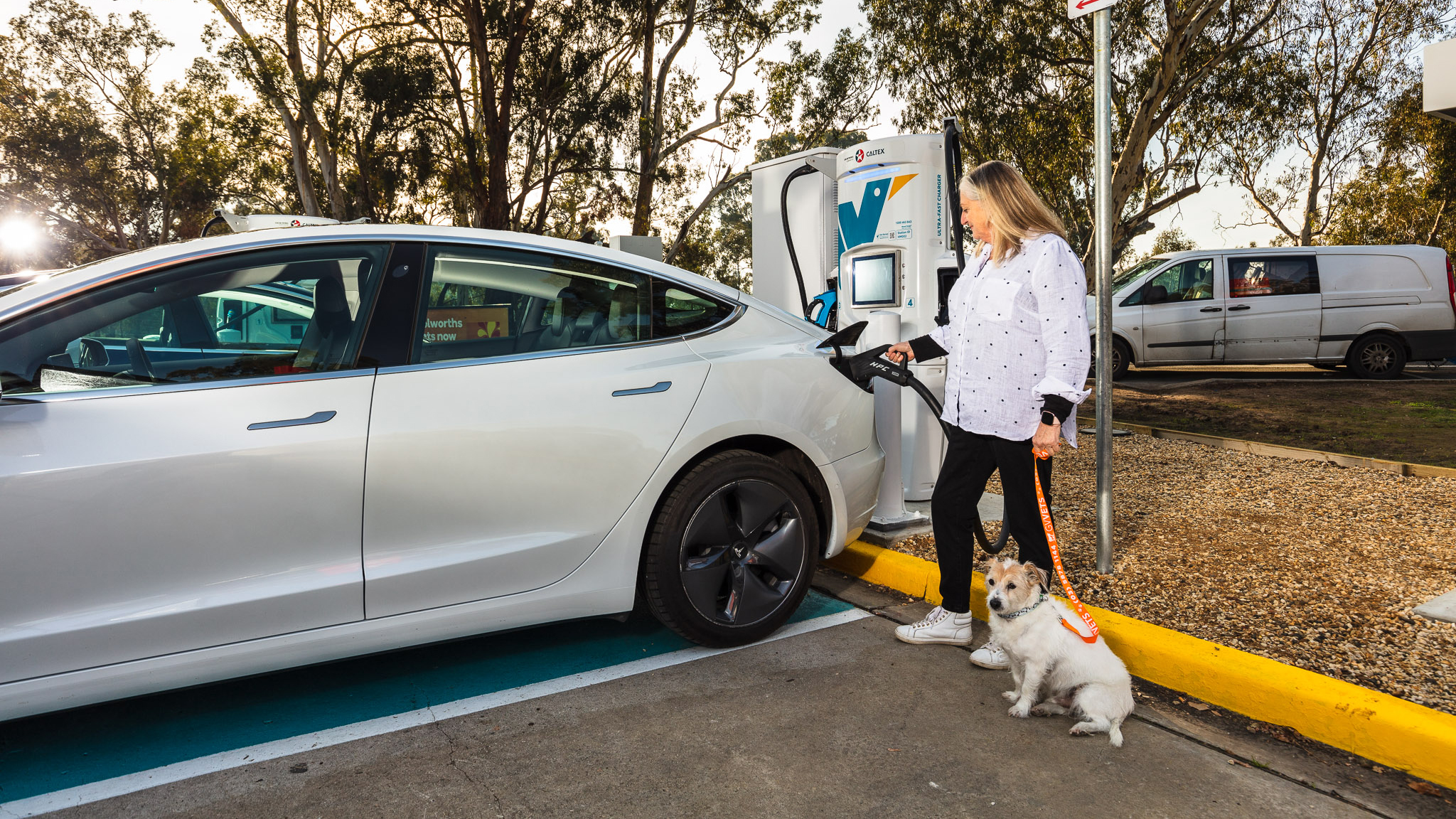Australia needs public EV charging standards! Follow the Pommy lead to eliminate unreliability and EV trash talk, urges Polestar boss
Australia should follow the British lead and introduce service standards for public charging networks, the leader of the premium EV brand Polestar has urged.
Scott Maynard argues the move is needed to help ensure the EV transition is achieved in the most efficient and painless manner possible.
Right now such service standards are not in place and there is no shortage of EV public charging horror stories in Australia to justify their introduction.
READ MORE: My nightmare experience with a rental EV. For God’s sake, just don’t do it.
READ MORE: Why our test Porsche Taycan EV wouldn’t charge and ended up on a flatbed.
READ MORE: Charging an EV is about to get easier: Ampol’s AmpCharge set for shopping centres.
“We really need to see the introduction of things like service standards for public charging infrastructure,” the managing director of Polestar Australia told EV Central.
And for that, he says, we must look to the Motherland. Yep, the Poms are well ahead of the curve.
“It’s legislated that there has to be 99 per cent uptime (for public EV chargers) and they have to publicly report their service levels,” Maynard explained. “We don’t have that in Australia.”

Clearly not. But if we did, and uptime reliability were enforced, Maynard argues owners’ negative experiences, social media anecdotes of charging frustrations and EV trash talk in mainstream media would plunge.
“I’d still label us (Australia) as transitionary and behind developed markets in Europe and Asia,” said Maynard. “Numbers (of public chargers) are coming up and it’s pleasing to see significant investment by both government and private business.
“But we see today that Australia has 2500 public charging points across the country, of that 120 are ultra fast. By comparison, the UK has 24,000 public charging points and 1600 are ultra fast. Given the size of the UK compared to our geographic footprint, we’ve still got some work to do.”
In the land of warm beer and cricketing disappointment, the Public Charge Point Regulations 2023 was introduced to “ensure that the experience of consumers using public charge points across the UK is consistent and positive. This will support the transition to electric vehicles.”
UK public charger rules include 99 per cent operational reliability, contactless payment (no need to sign up to an app for it to work), a 24 hour helpline and pricing transparency displayed in pence per kilowatt hour.

Fines are necessarily harsh.
For failing to meet the reliability requirement, reliability reporting or contactless payment, each breach attracts a fine up to £10,000 ($20,500). Obstructing any enforcement work attracts a fine up to £250,000 ($513,000).
All sound like perfectly obvious rules and regs, yet Australia has none of these things. Is there any movement for us to follow the Brits’ lead?
“There have been a few little whispers and comments about it, but nothing I would consider serious moves towards either legislating it or mandating it amongst providers of public charge points,” Maynard said.

‘We’re now at a point where we need to introduce that given there are some 2500 (charging) points in Australia; I’d absolutely call for that right now and I think we’d all benefit from that.”
In the UK in 2024, 20 per cent of all new car sales were pure EVs. In Australia, battery electric vehicle sales were 7.4 per cent over the same period.
Without an improvement to public charging infrastructure, Australia’s going to take a long time to catch up.
In June this year, Gold Coast City Council decommissioned 10 EV charging stations, citing unreliability and challenges getting hold of parts.
Brisbane-based high-speed DC EV charger provider Tritium went into voluntary administration in early 2024 (before Indian company Exicom saved it from bankruptcy), following heavy losses and well-reported issues with charger downtime and failure to provide spare parts.

With the likes of RACV, NRMA and RAC replacing their unreliable Tritium chargers, it’s little wonder EV owners who rely on public chargers have experienced frustration and even EV buyer regret for years.
Finnish fast charger brand Kempower has been called upon to replace many of the old Tritium units.
With the shift to (hopefully) more reliable public chargers, now looks the ideal time to replicate what the UK has done and introduce some proper legislation to rebuild trust amongst EV owners and the broader Australian public.
If we’re a country planning to get serious about EV uptake, it should be an absolute non-negotiable.





Good article. Unfortunately, setting up a new Standard is an incredible amount of work. (I have worked on Standards!) My feeling is that in Au/NZ we could consider incorporating the EV charging standards in the Disability Parking standard. I feel there are reasons for this:
-EV charging spaces need to be larger due to the various charging socket locations on vehicles (ie make the space conform, but not restricted to Disabled users).
-Users with a disability would then have the required access at any Standard Conforming charger, & also limited mobility clients would also get better access (after seeing elderly people with walking aid trying to access tight EV chargers!). Disability access would also mean easy access to the charger which would be on the same level as the vehicle (behind bollards designed to allow access).
I feel the advantage of easy access for all is there would then be easy access for the people that have any disability that restricts movement. Any changes to the Disability parking standard would flow to new EV charger installations. The Standard could change to enable EV charging to be allowed to all users, but fines for illegally parking in a Disability space could flow to persons who illegally park (ie ICE) or the ignorant few who do not move promptly after charging finishes. One other advantage of using this standard is planning-wise, 2 of EV charge locations can eat 3 of standard park spaces with no requirement to generate new park spaces to replace the ´lost´ space (I am not a planner, so this is AFAIK).
Any other changes to increase reliability would be by legislation (ie fines for not promptly repairing chargers), not part of any Standard.
I have a topic on Disability access to EV chargers on the AEVA Forum.
Just partner with Tesla to roll them out.
Only network with decent reliable chargers
As a pommy for public charging this has totally changed the game. However it has had a side effect. It used to be that only 50kW and faster chargers had to have the uptime and reporting requirement. Makes sense, they are the main public charger networks. Then they updated it to include everything 8kW and above (so basically anything but home style chargers).
My place of work used to offer out our charger outside work hours, reasonable rate just to cover electric costs and maintenance. We stopped that as, because it was publicly advertised, we would have to submit reports and have a 24/7 helpline!
We just wanted to help people charge if they needed, although in a business estate there are many houses a short walk away. But this rule has stopped that.
I understand dedicated CPOs (Charge Point Operators) having to follow this rule and it makes sense, it is thier primary business. But when you have this administrative burden for something your just trying to help out with, it adds an obstacle that we don’t need to overcome; we just turned it off to public access.